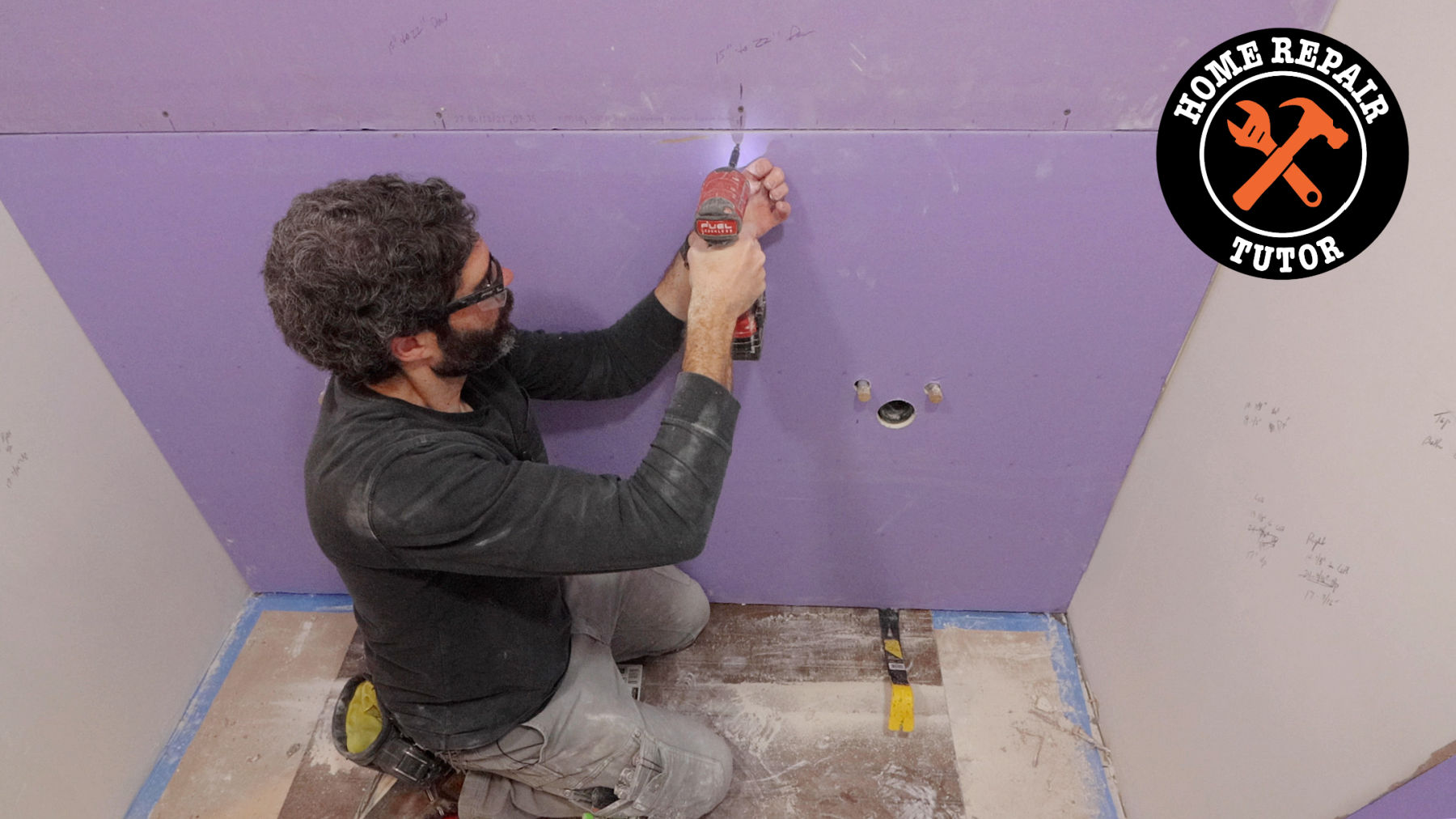Bathroom wall materials can make or break your bathroom remodel.
And the shower area is normally where it starts.
So it makes sense to protect the shower walls and ceiling.
But what materials should you use?
You’ll find out in this quick tutorial.
Let’s dive in.
Cement Board Shower Wall Tips
One of the best bathroom wall materials for showers is cement board.
It’s affordable, doesn’t have organic material, and tile can be set on top of it.
I prefer using DuRock by USG. But not all stores carry it.
So another great option is Permabase.
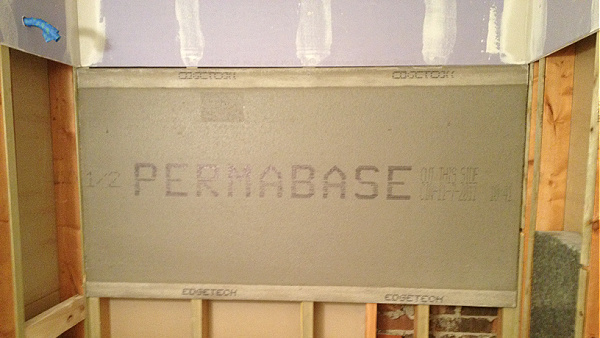
Keep in mind, cement board does require waterproofing.
If a liquid membrane is used, the cement board seams have to be prepped.
Alkali-Resistant mesh has to be applied at board seams and corners.
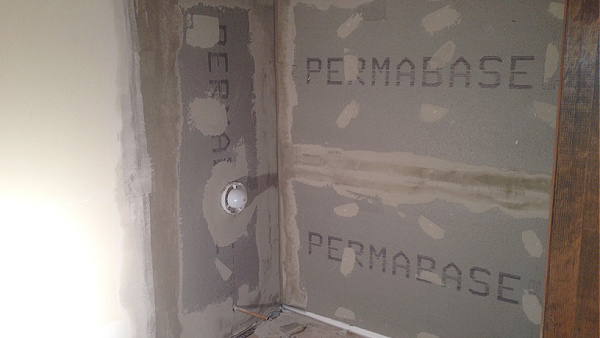
It’s important that only alkali-resistant mesh tape be used, and not drywall mesh. Normally it’s gray in color and found with cement board in the home stores.
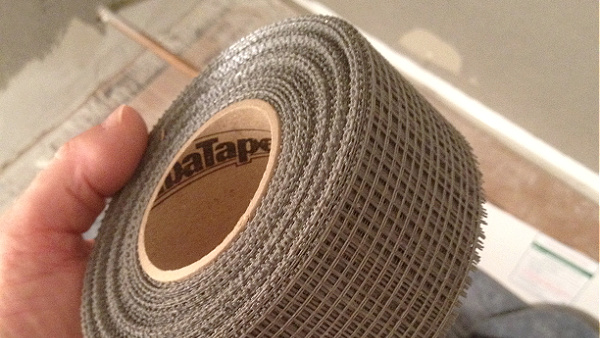
RedGard is one method to waterproof cement boards.
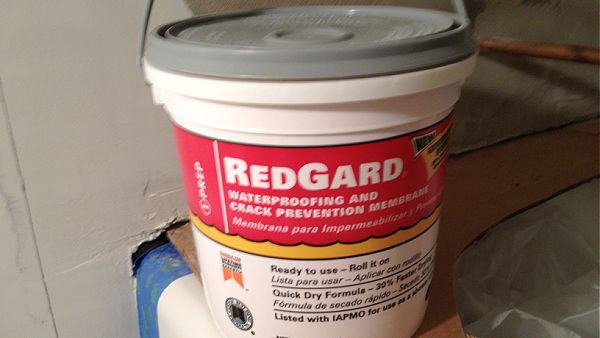
Schluter KERDI membrane is also a terrific bathroom wall material.
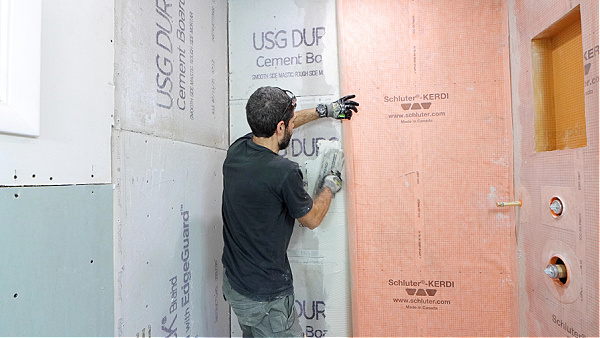
I’d actually use KERDI before RedGard.
Here’s why,
RedGard is a liquid membrane and it requires multiple coats.
In addition, it has VOCs (volatile organic compounds). These are released into the air as soon as you open the container.
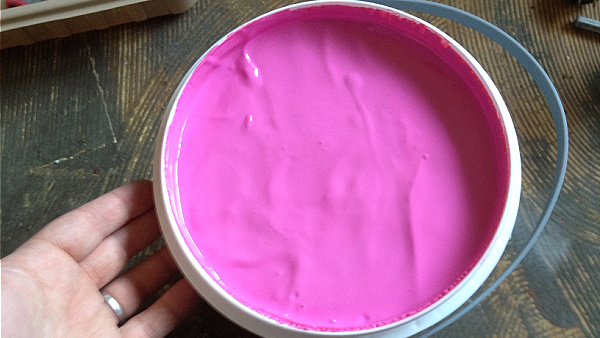
VOCs aren’t good for anyone with respiratory problems.
RedGard also has to cure before tile is set over it. This can be as long as 3 to 4 hours.
With that said, I totally understand why RedGard is considered. It’s definitely not hard to use and can be cost-effective.
RedGard has to turn from pink to dark red. Here’s what it looks like a few minutes after the application.
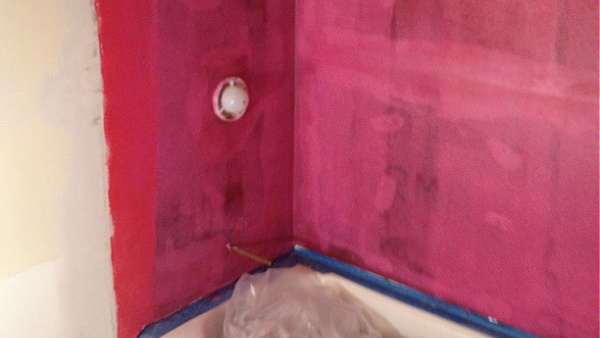
And this is what RedGard looks like after it cures.
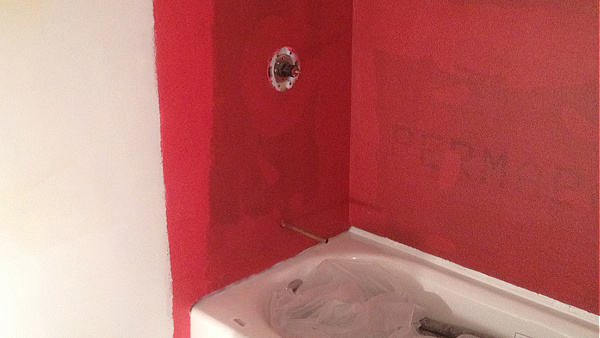
Laticrete makes an alternative to RedGard in the form of Hydro Ban. It’s green instead of red. But the application is similar.
KERDI has no VOCs. But it does require thin-set mortar. And some additional tools, e.g. KERDI trowel and drywall knives.
Also, you should dampen the cement board prior to applying thin-set mortar.
This helps keep the cement board hydrated. And prevents the board from absorbing the thin-set mortar’s moisture.
All that said, I like using foam backer boards for shower walls.
Foam Backer Board Option
Normally I use KERDI-BOARD for my showers.

No doubt, KERDI- BOARD is not cheap.
However, you can use extra pieces to save money.
For instance, you can build custom niches with it.
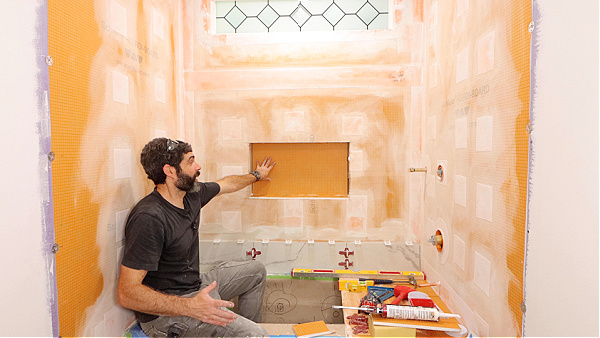
I also use two-inch thick KERDI-BOARD to build curbs, half walls and shower benches.
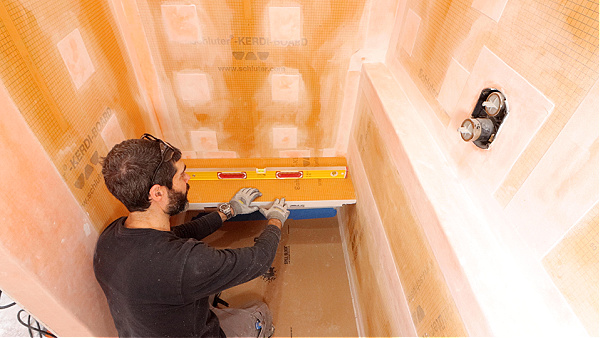
The other benefit is being able to wet shim KERDI-BOARD.
This is helpful when your studs are not perfectly even or plumb.
You can apply thin-set mortar to the studs. Then get the KERDI-BOARD plumb.
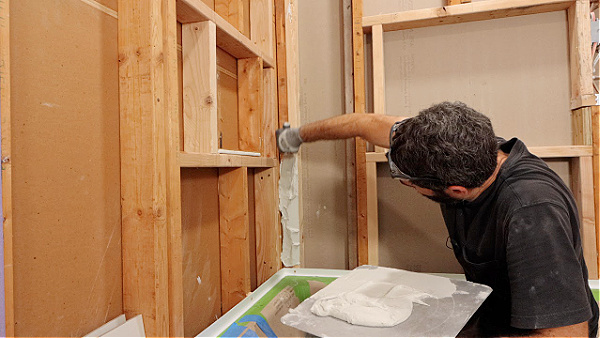
No matter what backer board you use, always inspect the studs.
If the studs aren’t even, 16 inches on-center, and plum, fix them.
Here’s a great tutorial on the topic.
Drywall for Bathroom Walls and Ceilings
Most of the time I use Purple Board for bathroom walls.
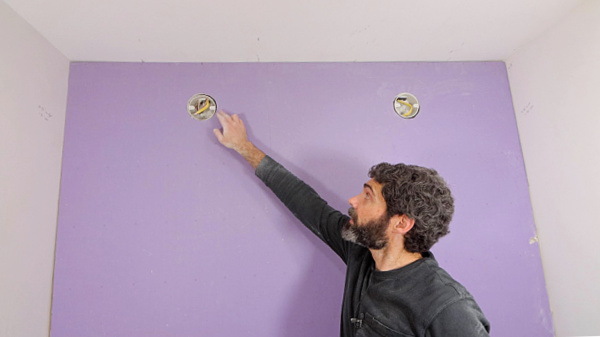
Purple Board is a great option because it’s constructed from a mold & moisture-resistant fiberglass mat.
National Gypsum is the manufacturer of Purple Board.
It installs just like normal drywall and uses the same type of screws.
By the way, I use 1-5/8 inch coarse-threaded drywall screws for 1/2 inch drywall. And space my screws every 10 to 12 inches – which is closer than what is recommended.
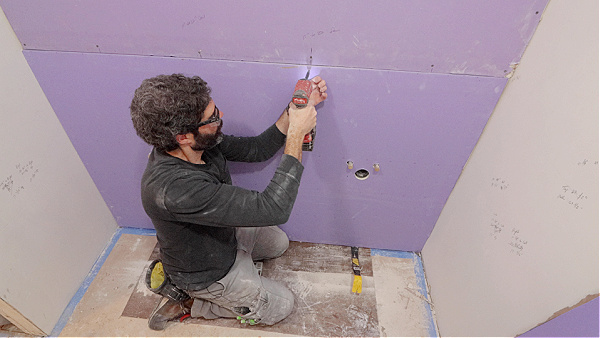
Always know which screw to use for wood studs and which one to use for metal studs.
Coarse-threaded drywall screws are best for wood studs.
Fine-threaded drywall screws are used for metal studs.
I always get asked about what type of drywall to use for bathroom ceilings.
Usually, I use standard 5/8″ drywall for 16-inch on-center ceiling joists.
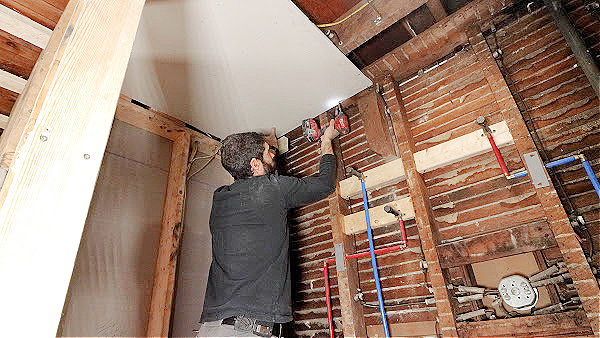
Some codes require 5/8″ thick drywall, so always know what your local code requires.
I use standard drywall ceilings in bathrooms.
If the bathroom is ventilated properly, and the drywall is prepped, mildew won’t occur.
I prime drywall with Sherwin-Williams PrepRite. Then paint the drywall (both the ceiling and walls) with Sherwin-Williams Emerald paint.
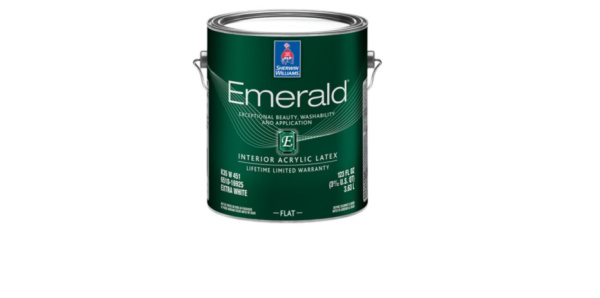
This paint resists mold and mildew, it’s a bit more money but worth it.
Joint Compound for Bathrooms
What type of joint compound should be used for bathrooms?
Frankly, I use setting type 45 or 90 for bathrooms.

I do this because it’s a chemical cure instead of relying on moisture.
Thus, you can get multiple coats of setting-type joint compound in one day.
I mainly use a setting-type joint compound to embed my tape. And to get 2 to 3 coats of compound on the seams, corners, and screws.
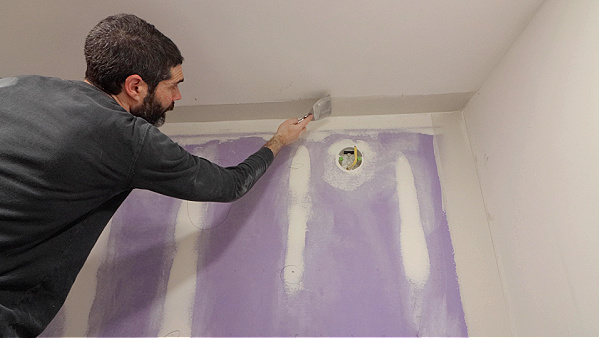
The thinner the coat the faster it cures.
The most important tip when using setting-type compound is to mix it and have a smooth consistency.
I sand each coat with Spysponges.
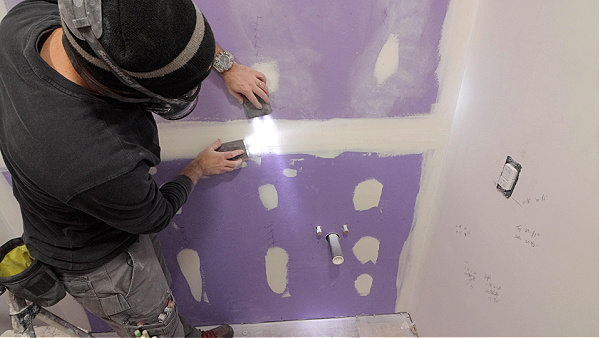
Spysponges use lights. And this allows you to see any imperfections and sand them away.
If I need a smoother finish I’ll use USG Plus3 joint compound.
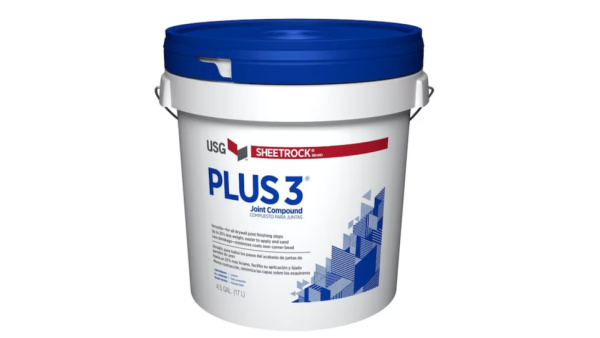
I usually just need one coat over my setting-type compound.
But what about drywall joint tape?
Best Drywall Joint Tape for Bathrooms
Joint tape comes in two different commonly used forms: paper or fiberglass.
In the past, I would mostly use paper tape because it provided the smoothest finish.
But lately I’ve been using Strait-Flex for inside corners.

I really like Strait-Flex corners because they stronger than paper.
And because the corner is stiff, there’s likelihood of bubbling – which can happen with paper.
That said, I still use paper for butt joints.
Yet, use Strait-Flex for horizontal and vertical inside corners.
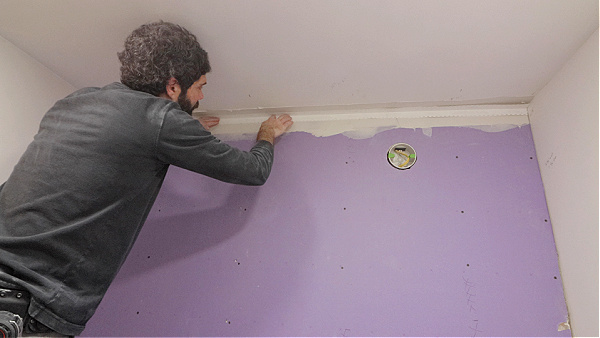
For bathrooms, I feel that Strait-Flex is terrific. The room gets a lot of use and is exposed to light and humidity.
So having a beefy corner makes the bathroom more durable over time.
What’s Next
Even if you’re hiring a contractor it’s still a good idea to become familiar with building materials.
This will allow you to make the best decisions for yourself & your family.
Do you need help with your bathroom remodel?
Make your project easier with our Platinum Membership, over 375 step-by-step tutorials and Personal Coaching.
Tap the button below to learn more
Cheers,
Jeff



